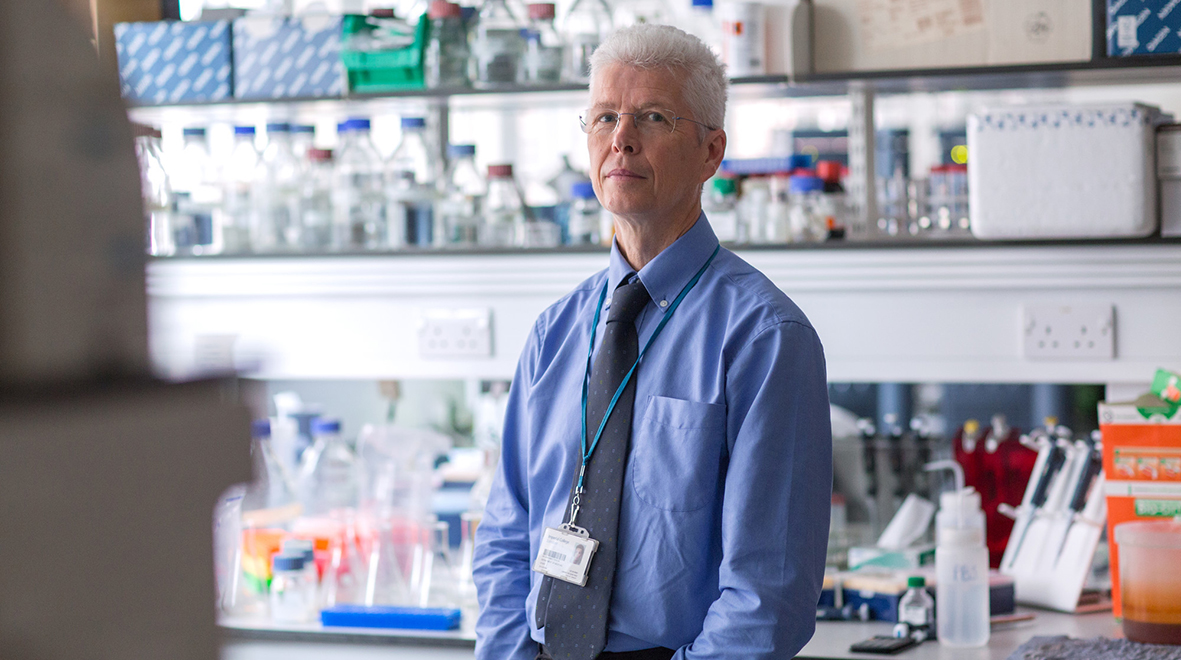
Ahead of the WHO Global Consultation on HTLV-1, Professor Graham Taylor outlines three steps to prioritise the neglected cancer-causing virus.
“I couldn’t do anything for a week after I opened the letter and saw that I was infected with it. I saw H and thought I had HIV. I’d never heard of HTLV”.
It’s not the first time that I’ve heard this, but this was two days ago, almost 40 years since the report in 1980 of the discovery of the human T-cell lymphotropic virus (HTLV-1). Sadly Janet* is joined in her lack of awareness not only by almost the entire general public but also by most healthcare professionals.
This weekend saw World HTLV Day marked for the second year, with the slogan is: ‘It’s time to care’. This is in response to a general perception that there is a widespread indifference toward HTLV. Hopefully this will change soon. This week, I fly to Tokyo to participate in a WHO Global Consultation on HTLV-1 to address the public health impact and implications of this little-known virus.
That means three days to:
- Review the evidence that HTLV-1 does indeed cause disease
- Try to quantify the numbers affected
- Most importantly, determine the actions that need to be taken to address the problem.
Review the evidence that HTLV-1 does indeed cause disease
This shouldn’t be difficult. After all, we’ve had the ‘WHO diagnostic guidelines of HAM’ (HTLV-1-associated myelopathy – an inflammation of the spinal cord) since 1989 and the International Agency for Research on Cancer (IARC), which is part of the WHO, declared HTLV-1 to be a carcinogen in 1996. Most recently researchers in Sydney, Australia who systematically reviewed studies published on HTLV-1 and health outcomes from across the world found that being infected with HTLV-1 was associated not only with HAM and the blood cancer adult T-cell leukaemia (ATL), but with 16 other conditions.
Most striking of all was the finding that carriers of HTLV-1 were overall at risk of dying earlier than those who were not infected with this virus. The reasons for this were not identified but could not, according to the authors, be attributed to ATL alone as this only occurs in a small percentage of HTLV-1 carriers. Since the majority of other diseases found to be linked to HTLV-1 were either other infections or in some way related to inflammation, this seems to be a good place to start looking.
Quantify the numbers affected
This part is more difficult. A report from the European Centre for Disease Prevention and Control in 2015 details what is known about the number of people infected worldwide. At least five to ten million was the finding, but for many countries, home to a significant proportion of the world’s population, there are few or no reports. So, the number could be much higher.
Determine the actions to address the problem
This third part is likely to be the most challenging, although the theory of what should be done might be straightforward, we need to plug the knowledge gaps: population surveys to find out how common HTLV-1 really is; clinical studies to prove or disprove the reported links between HTLV-1 infection and a broad range of diseases; mechanism studies to understand how the virus causes disease, and treatment studies to learn how to better manage the consequences of this infection.
Prevention is better than cure. In theory, preventative action can be planned. The routes of infection are well known – from mother-to-child, mostly through breast-feeding; between sexual partners through unprotected sex; through infected blood and transplants, and through any practice that results in sharing blood, deliberately or inadvertently. For appropriate, simple advice to be given, the HTLV-1 infection status of the recipient of the advice needs to be known.
So, the first step towards prevention of infection is awareness. How can a mother decide whether breast is best for her baby if she is not offered the chance to know whether she carries a virus that causes leukaemia? How do consenting adults wishing to have sex without a condom decide it is safe to do so when no one checks for HTLV-1? Who, in the countries that don’t screen for HTLV-1, informs the transplant or blood recipient of the chances of developing a literally crippling disease? Research from Canada suggests that transplant candidates would rather take the chance of leukaemia than a chronic, progressive, paralysing disease resembling HAM (HTLV-1-associated myelopathy).
Patients voices
Some months ago, we had a conversation with our patients in a forum. They told us that amongst the things that mattered most to them were having a voice, knowing what was going to happen to them and knowing that their healthcare provider knew about HTLV-1. Whatever happens this week I hope that I can return to clinic and say to them: “This virus is no longer in the shadows, your problems are recognised, and the political will is there to tackle them.”
Professor Graham Taylor is head of Retrovirology and GU Medicine in the Department of Infectious Disease, in addition to his role as clinical lead of the National Centre for Human Retrovirology at St Mary’s Hospital, Imperial College Healthcare NHS Trust.
Read other posts by Professor Graham Taylor.
*Names have been changed to protect patient confidentiality